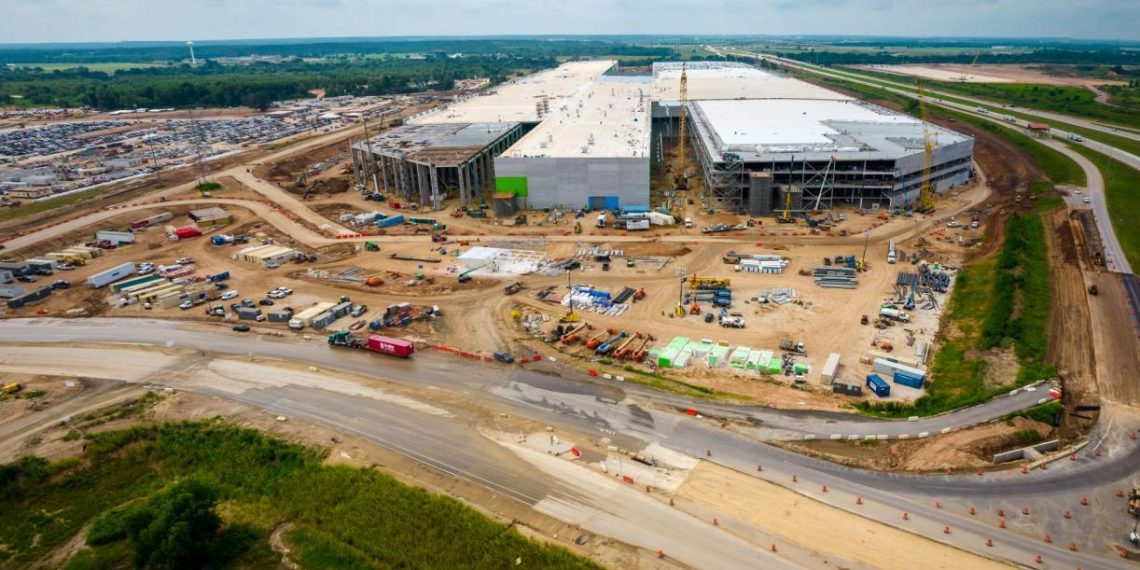One year ago, on Aug. 16, 2022, President Joe Biden signed the Inflation Reduction Act into law, mobilizing historic investments in clean energy, electric vehicles, energy efficiency, environmental justice and other green initiatives. Through these funding measures, the Inflation Reduction Act holds the potential to drastically slash the United States’ carbon emissions and bring the country’s climate goals within reach.
But it’s not just about the climate: The Inflation Reduction Act also marks a fundamental shift in the U.S. economy, ushering in a manufacturing revival that could create millions of new, well-paying jobs throughout the country in red, blue and purple states alike. Crucially, this approach is radically different from trickle-down economics because many of these investments will benefit workers without college degrees and industrial cities whose economies have declined in recent years.
Just one year after its enactment, early data suggest that the Inflation Reduction Act is already succeeding in rebuilding the country’s previously hollowed-out manufacturing base, bringing new jobs to the heartland and beyond. Here’s a closer look at how the Inflation Reduction Act is delivering economic benefits across the country.
How the IRA Ignited a Renaissance in U.S. Manufacturing
In recent decades, the United States has seen massive offshoring of manufacturing jobs. Once-vibrant communities began to contract and stagnate as workers, particularly those without college degrees, struggled to find good paying jobs.
The number of manufacturing firms and plants in the U.S. has fallen by roughly 25% since 1997. And the decline and closure of these plants was accompanied by a steady decline in American manufacturing jobs: In 1998, 18.1 million Americans were employed in the manufacturing industry, representing 11% of the total workforce. By comparison in 2018, 13.5 million Americans were employed in the manufacturing sector, representing only 6.7% of all jobs.
While leaders of both parties pledged to address the offshoring of jobs for decades, the Inflation Reduction Act is the first major piece of legislation in more than 50 years to actually address the offshoring of industry and reinvest in U.S. manufacturing at scale.
The law has already unleashed a manufacturing renaissance by nearly doubling the amount of manufacturing construction in just one year, with forecasts of even higher growth in years to come. Since its passage, makers of battery components, wind and solar equipment, and electric vehicles have announced tens of billions of dollars of new investments, bringing significant local opportunities with them. Between August 2022 and July 2023 alone, 272 new clean energy projects were announced in 44 states. These will generate more than 170,000 new jobs in small towns and big cities alike with Michigan, Georgia, South Carolina, California and Texas leading the way.
Though spurred by incentives in the Inflation Reduction Act, much of this new investment comes not from federal dollars but from the private sector. States and local governments have long used tax credits and other incentives to entice private and public investments into their communities. Now the federal government is following suit. And because the IRA tax credits are uncapped, the private sector may end up investing more capital in clean energy projects creating more manufacturing jobs than originally predicted.
In the summer of 2022, the Congressional Budget Office forecasted that approximately $369 billion in federal clean energy tax credits may be claimed through the law. However, according to an April 2023 analysis by Goldman Sachs, the now estimated $1.2 trillion in federal incentives may encourage up to $3 trillion in private investment over the next decade, resulting in millions of new, well-paying jobs.
Which Regions of the US Are Benefitting the Most?
The last year has seen increased manufacturing investment throughout the country in rural, suburban and urban communities alike — from a $1.8 billion semi-conductor facility in Wichita, Kansas, to a $5 billion auto manufacturing facility in Bartow County, Georgia, to a $1.2 billion battery plant in Tucson, Arizona.
While new projects are cropping up in nearly every state as this map created by the White House illustrates, many of the clean energy and battery investments spurred by the law have been concentrated in the Midwest and Southeast in what experts are now calling the “Battery Belt.” These are often areas that have seen economic decline in recent decades due to the pivot to lower-carbon energy or offshoring.
For the communities that were traditionally dependent on fossil fuels and other carbon-intensive industries the incentives in the Inflation Reduction Act present an opportunity to supercharge the transition to cleaner manufacturing and revitalize their economies in the process. In Michigan, for example, the auto industry has been a dominant economic force for decades. As the U.S. begins to shift toward low-carbon transportation, new investments in electric vehicles and battery manufacturing are sprouting up around the state.
What Does the Future Hold for the Inflation Reduction Act?
The Inflation Reduction Act has kickstarted investments in clean energy and clean technology manufacturing, and now state and local officials are actively recruiting additional private investment to fully leverage federal funds and create new local jobs. There is a race among governors to attract the private capital unleashed by the law, with Georgia Gov. Brian Kemp (R) leading the way by securing more than $15 billion in clean energy investments in Georgia as of May 2023.
American companies aren’t the only ones paying attention to the investment-friendly environment created by this law. Representatives from several states, including Georgia, Ohio and Michigan, have traveled throughout Europe hoping to attract foreign developers with the subsidies offered by the Inflation Reduction Act. The governors of Illinois, Michigan and Georgia also visited the World Economic Forum in Davos in January 2023 to promote their states as destinations for clean energy investments.
As of January 2023, half of the manufacturing investments from the Inflation Reduction Act have come from foreign companies. These investments are going across the country, notably there are plans for Georgia to have both a South Korean solar factory from Hanwha Q-Cells as well as a Norwegian battery factory from the company Freyr.
Realizing the full potential of the Inflation Reduction Act will also require overcoming significant hurdles, both political and technical, that could hinder long-term implementation of the law.
For example, it is essential that that renewable energy projects already awaiting connections to the grid can come online to efficiently and safely transmit clean power from source to user — whether that be moving wind energy from Oklahoma to North Carolina or solar energy from Arizona to California. According to the most recent analysis from Princeton University’s Repeat project, roughly half of the Inflation Reduction Act’s potential emissions reductions could be lost unless the U.S. increases energy transmission capacity at about twice the rate of the past decade. Addressing the transmission challenge will require reforms to the way these projects are sited and permitted at the federal, state and local levels. Congress as well as federal and state officials charged with permitting projects must resolve these significant hurdles to ensure the clean energy revolution made possible by the Inflation Reduction Act can bear fruit.
In addition, some members of Congress are calling for investigations into the law’s implementation while others are talking about repealing the incentives altogether. But as the law’s economic benefits are increasingly felt across the country, it may make any efforts to repeal these measures politically challenging. To do so would mean stemming tax credits, private investments and supply chains, all of which are now in motion. And the law is likely to become even more popular among residents of rural and suburban communities where manufacturing expansions and job growth are already beginning to take place.
In Texas, for example, a diverse group of stakeholders including environmentalists, industry organizations and business groups — including more than 50 chambers of commerce, manufacturers, generators, oil and gas advocates — recently came together to push back on efforts to fast track a series of bills in the state legislature seeking to undermine the renewable energy industry. The shared goals and actions of this unusual coalition suggest that the depolarization of clean energy may be possible.
The Inflation Reduction Act offers a once-in-a-generation opportunity not only to catalyze climate action in the United States, but to revive the country’s manufacturing base and uplift millions of Americans in the process. To learn more about funding and tax incentives in recent U.S. climate laws, and find out how your state, company or organization can leverage these investments, see WRI’s U.S. Climate Policy Resource Hub.
A version of this article was originally published in The Messenger on Aug. 1, 2023.



